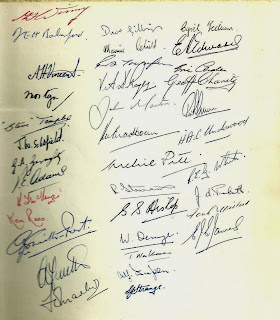In November 1939 Hislop joined the A&AEE, where he worked on the
development of fighters and bombers operating at high altitude and the
associated meteorological and physiological problems; he also joined many test
flights as an observer. Hislop was first introduced to the helicopter during his wartime work at the
Aeroplane and Armament Experimental Establishment (A&AEE) at Boscombe Down.
In late 1944 the helicopter arrived there for trials, and he had his first
flight in the basic Sikorsky R4.
Hislop transferred to Farnborough in April 1945 as a senior scientific
officer, looking at the behaviour of aircraft flying at high speed, but was soon
asked to carry out exploratory research work on helicopters.He flew regularly on test flights of the R4 . It was the beginning of his long association with rotary wing aircraftTwo years later he
joined British European Airways’ research and long-term development department,
which resulted in the formation of British Airways Helicopters.
Hislop was the senior assistant involved in the monitoring, programming and
financial control of the unit. Initially, the main activity was a night postal
service in East Anglia, but the long-term goal was carrying passengers between
cities.
When in 1952 the Ministry of Civil Aviation asked for a large intercity
passenger-carrying helicopter, Fairey Aviation’s proposal was accepted. A year
later Hislop joined Fairey as chief designer (helicopters) responsible for
building and testing the 40-seat Fairey Rotodyne. This complex aircraft was well
ahead of its time, drawing a letter of intent from BEA; there was also interest
from some American airlines. But when BEA pulled out of the project the Rotodyne
was cancelled in 1962.
Hislop developed the ultralight helicopter, which was later developed into the highly successful Scout and Wasp military helicopters.
In 1960 Westland Aircraft took over Fairey, and Hislop joined the parent company. Two years later he was appointed technical director, later becoming managing director and, in 1973, executive vice-chairman. During this period he led the development and introduction into service of six types of military helicopter, including the Wessex and Sea King. He also played a major role in launching the production of the giant Anglo-French helicopter programme which led to the Gazelle and the Lynx, both built in large numbers — an advanced Lynx is still in operational service.
Hislop served as chairman of the council of the Helicopter Association of Great Britain and as its vice-president. He was president, in 1973, of the Royal Aeronautical Society, which in 1961 had awarded him the Simms Gold Medal . He also received the British Gold Medal for Aeronautics (1972) and the Royal Aero Club’s Louis Breguet Memorial Trophy.
He served as chairman of the Aircraft Research Association and of the Airworthiness Requirements Board.
He was appointed CBE in 1976.
Hislop developed the ultralight helicopter, which was later developed into the highly successful Scout and Wasp military helicopters.
In 1960 Westland Aircraft took over Fairey, and Hislop joined the parent company. Two years later he was appointed technical director, later becoming managing director and, in 1973, executive vice-chairman. During this period he led the development and introduction into service of six types of military helicopter, including the Wessex and Sea King. He also played a major role in launching the production of the giant Anglo-French helicopter programme which led to the Gazelle and the Lynx, both built in large numbers — an advanced Lynx is still in operational service.
Hislop served as chairman of the council of the Helicopter Association of Great Britain and as its vice-president. He was president, in 1973, of the Royal Aeronautical Society, which in 1961 had awarded him the Simms Gold Medal . He also received the British Gold Medal for Aeronautics (1972) and the Royal Aero Club’s Louis Breguet Memorial Trophy.
He served as chairman of the Aircraft Research Association and of the Airworthiness Requirements Board.
He was appointed CBE in 1976.



